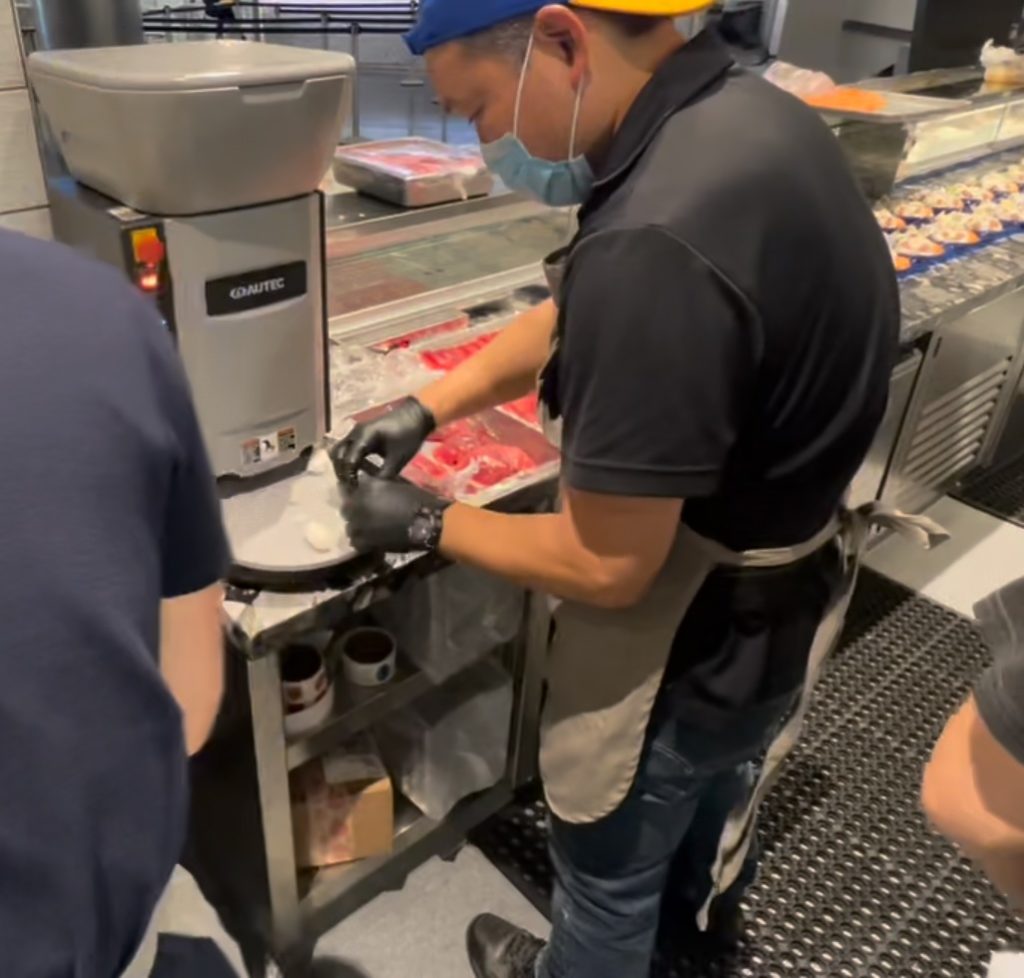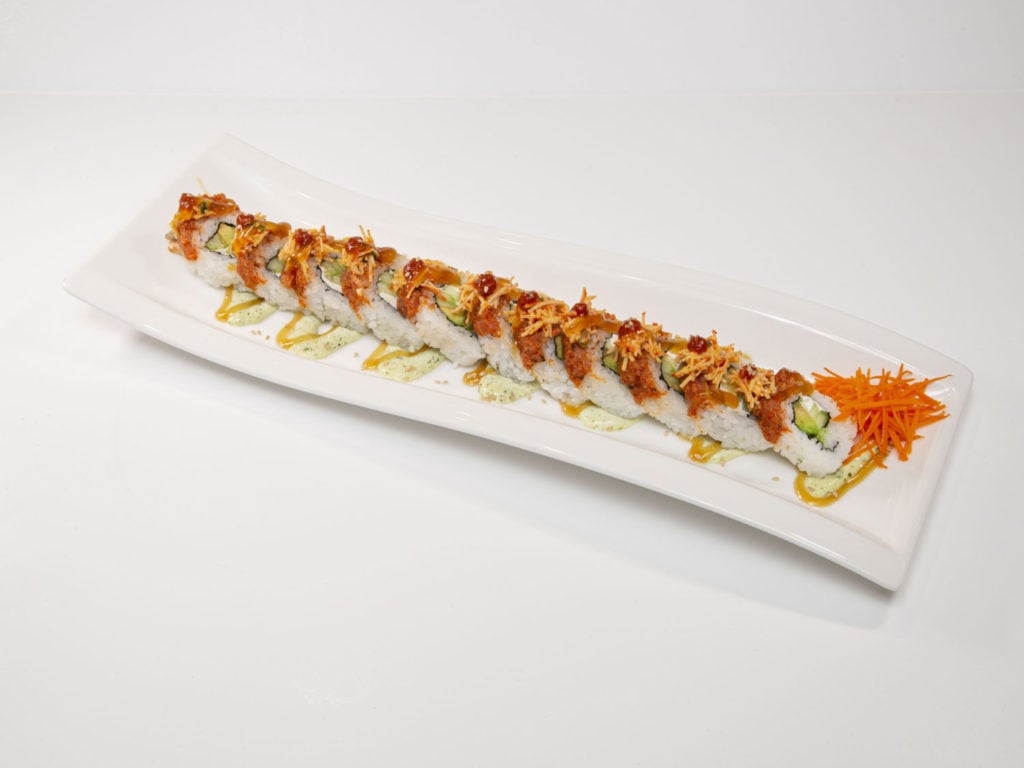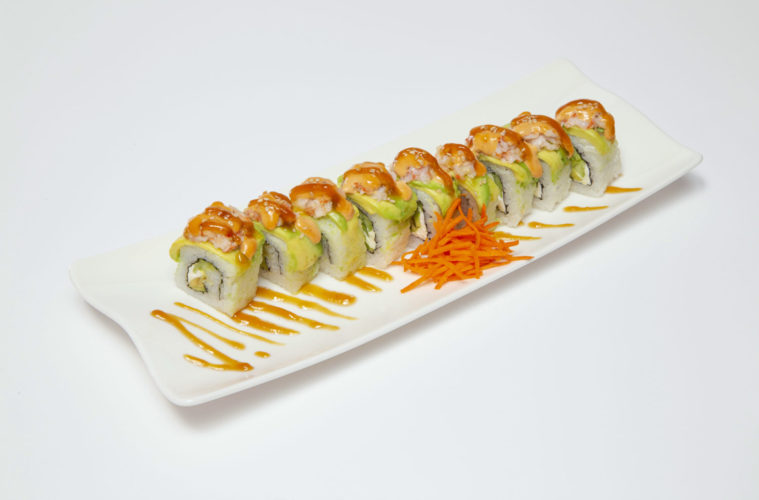How does the largest, most complex state-of-the-art stadium prepare and feed more than 70,000 hungry fans for the Super Bowl? With state-of-the-art robots, of course.
Taka Hirano, who oversees the entire sushi operation for SoFi Stadium games and events, has partnered with AUTEC, the nation’s leading commercial sushi robot provider, in order to bring high-quality sushi quickly to fans, in an effort to reduce long lines during the game.
Sushi Robots ASM410A (Nigiri Maker) and ASM865A’s (Maki Maker) primary function is to form rice balls and rice sheets as a base for making Nigiri Sushi and Maki Sushi. Both sushis are finished by human hands, where the cut fish is placed on the rice ball, and the Maki is filled and rolled by hand. The robots can create up to 1,300 rice sheets and 2,400 rice balls per hour.
“Learning to form rice for sushi takes years to master,” Hirano tells L.A. Weekly. “Having an assistant like our sushi robot can be an excellent tool for sushi operations of this magnitude, as producing large amounts of perfect and consistently formed sushi in a short time can sometimes be impossible without robot assistance. Multiple factors contribute to this challenge, but the leading cause is usually a drop in concentration and physical fatigue. Even with an expertly trained group of sushi chefs, it is physically impossible to produce the same amount and quality of sushi for the entire duration of the game.”
Hirano explains that the advantage of the sushi robots is that a chef at any level can use the robot with just a 20-minute training process, and can produce perfectly consistent sushi rice balls or rice sheets, and eliminate stress on the chefs and help the food move faster. He believes that it’s a great trend that a lot of people are looking into these food service robots.

Sushi prep stadium operations (Courtesy AUTEC)
“With the nature of sushi, chefs have to go through an extended training period before they are allowed to serve customers, which is a great thing since this is the reason sushi is thought of as an art to some extent, but it does have some cons,” says Hirano.
“With the labor shortage that has been apparent since the break out of COVID-19, it is not just hard to find a qualified sushi chef, but it is also hard to train new chefs to become a sushi chef as well. There are lots of concerns that robots will take human jobs, but I believe that won’t be the case. From my experience, I would say that the robots are there to complement a chef’s work, making it easier for them to focus on the more important aspect of the dish, rather than stripping away the capability for chefs to intervene. Even with the Sushi Robots, there are lots of other things that have to be done by hand, i.e., cutting the fish and cooking rice.
“As for the stadium operation, the speed of preparing each plate has to be kept to a minimum while keeping the quality at high standards. Since we have to serve huge amounts of people in such a short time, it would be virtually impossible for us to prepare everything prior to the game by hand. By utilizing these robots, we are able to focus more toward customer satisfaction, without sacrificing the quality of the sushi itself.”

El Sushi Loco owner Frank Mendoza has been using robotic assistance since the pandemic. (Courtesy El Sushi Loco)
El Sushi Loco owner Frank Mendoza has been using the 20-year-old AUTEC’s robotic assistance since the pandemic and credits the technology as a main reason he was able to keep all three locations open and believes that integrating automation can actually benefit human staffing.
So how does Hirano anticipate that the visitors from Ohio with traditional appetites for chili and spaghetti will embrace the state-of-the-art food selections of SoFi Stadium’s assorted vendors?
“L.A. is a town known not just for its fanciness, but for its diversity,” says the sushi master. “We have a sushi restaurant next to a Mexican cantina and might have a Pho place next to that. Some might say it’s chaotic, but I think this diversity is what makes this city so interesting to people, and this is normal for us who live in LA. I have a feeling fans from Cincinnati will be flying over to L.A., not just to support their favorite team, but to experience that diversity.”
Advertising disclosure: We may receive compensation for some of the links in our stories. Thank you for supporting LA Weekly and our advertisers.

